I mentioned in my Whole Lotta LOVE post that there’s no quick or easy way to get to Virginia’s Eastern Shore from here.
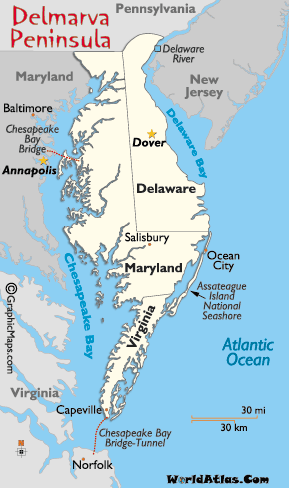
I’m a lover of maps, so here’s a quick geography lesson for you… Virginia’s Eastern Shore is at the southern tip of the Delmarva Peninsula.
Without getting too technical, Delmarva is essentially a large peninsula occupied by most of Delaware as well as portions of Maryland and Virginia. That part of Maryland is simply known in these parts — at least by people like me who grew up in Maryland — as “The Eastern Shore,” not Maryland’s Eastern Shore. The Chesapeake Bay separates the peninsula from the mainland.
From my house, to reach any point on the peninsula, I’d either have to go north and east into Maryland to cross the Bay Bridge near Annapolis or south and east through Hampton Roads/Tidewater Virginia to cross the Bay Bridge-Tunnel.
Of course, if my destination is the northern portion of the peninsula, I’d head up I-95 into the far northern portion of Maryland and head south across the Chesapeake & Delaware Canal, the digging of which technically made Delmarva an island. Oh wait, I said I wasn’t going to get too technical, didn’t I?
Anyway… I elected to take the southern route to reach the peninsula, which made my trip pretty much a counter-clockwise loop. After capturing all of the LOVEworks in Virginia Beach, Newport News, and Norfolk, I headed north across the mouth of the bay via the Chesapeake Bay Bridge-Tunnel (CBBT), “the 17-mile link between Virginia Beach/Norfolk and Virginia’s Eastern Shore.”
Crossing isn’t cheap. The fee schedule is a bit complicated, so let’s just say it’s $13 for a car (or motorcycle) to cross off peak. Each way. Unless your return trip happens within 24 hours, then it’s only $5 to return, making it $18 round-trip.
I guess that’s not horrible, considering you get to drive across the mouth of North America’s largest estuary.
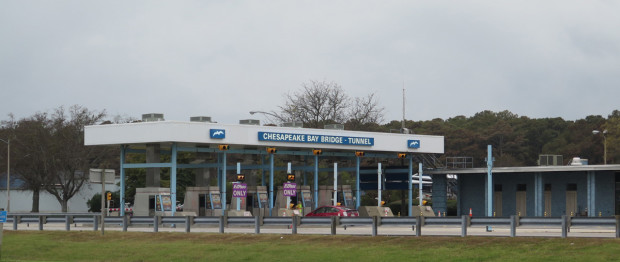
As explained on the CBBT’s website, “From shore to shore, the Bridge-Tunnel measures 17.6 miles (28.4 km) and is considered the world’s largest bridge-tunnel complex. Construction of the span required undertaking a project of more than 12 miles of low-level trestle, two 1-mile tunnels, two bridges, almost 2 miles of causeway, four man-made islands and 5-1/2 miles of approach roads, totaling 23 miles.”
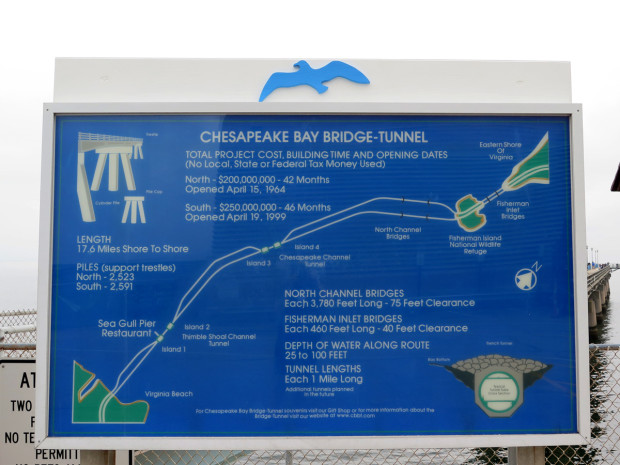
On the southernmost of the four man-made islands (Island #1), 3-1/2 miles from Virginia Beach, there’s a rest area where travelers can stop, stretch, and gawk. You can also grab a bite to eat, fish (there’s a 625-foot fishing pier), watch birds and/or boats/ships, or just take in the natural beauty and sounds of the Chesapeake Bay. The tunnel leading from there to Island #2 goes under the channel that Navy vessels use regularly. So if you’re lucky, you could actually watch an aircraft carrier, submarine, and/or other ships and boats pass out to sea. Wouldn’t THAT be cool?
Traffic was very light, so I was able to capture pics during my crossing without risking life and limb. Sorry, but the weather wasn’t great for pictures.
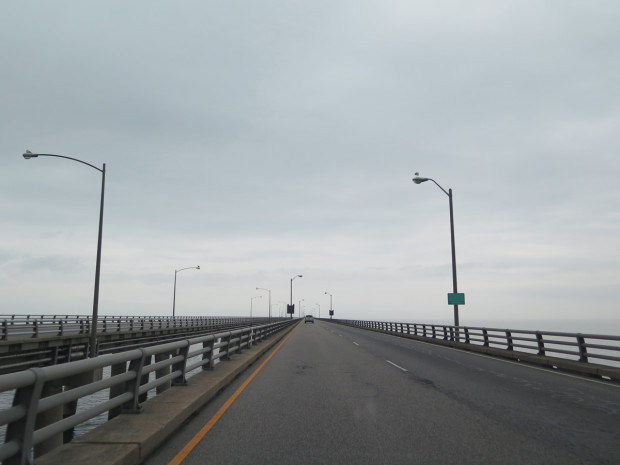
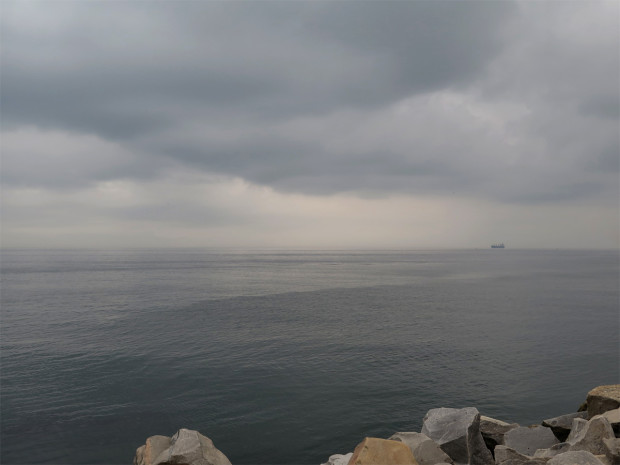
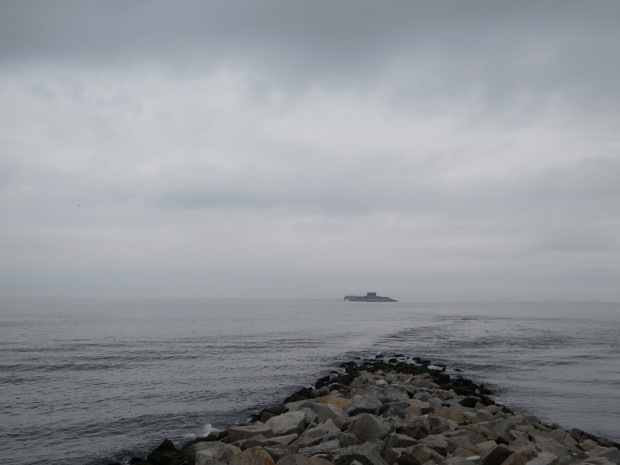
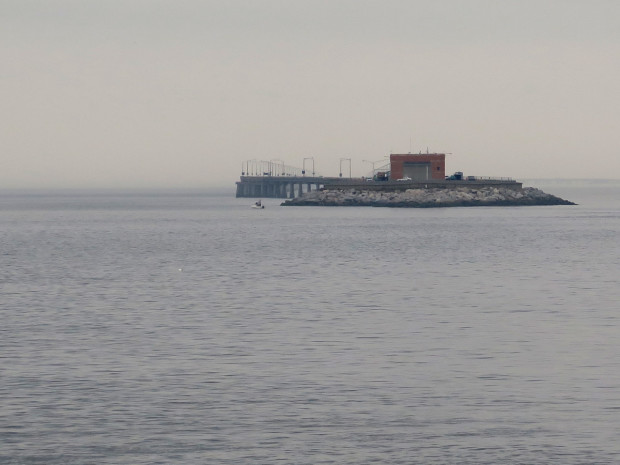
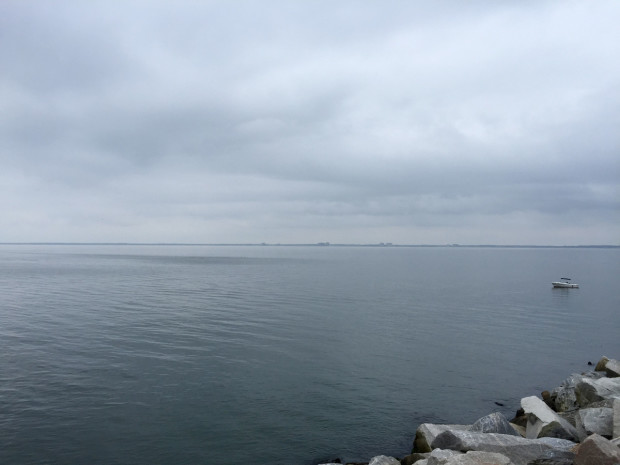
I was surprised to see how smooth the water was, especially considering that storms were definitely nearby and getting closer with every passing second. I’ve been on the bridge before when seas were so rough that waves were splashing up onto the bridge deck through the storm drains/grates.
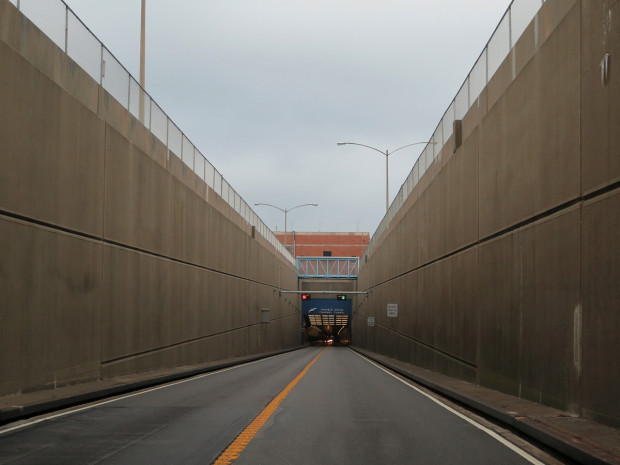
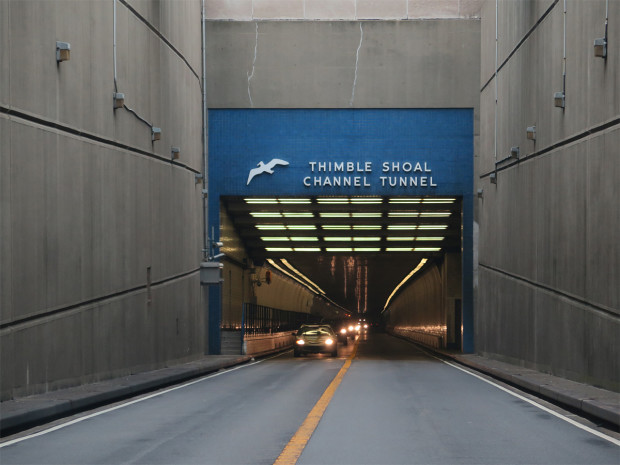
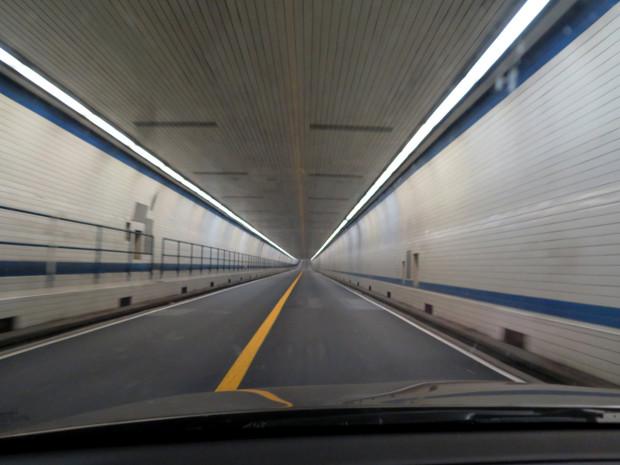
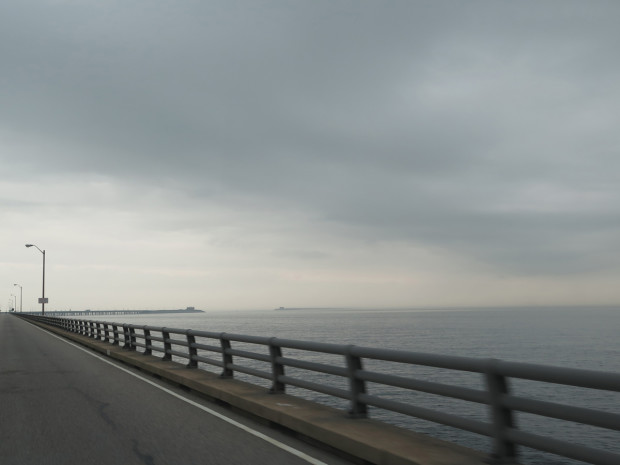
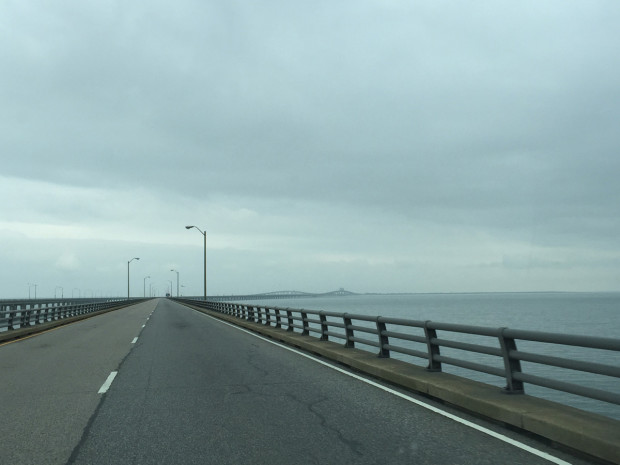
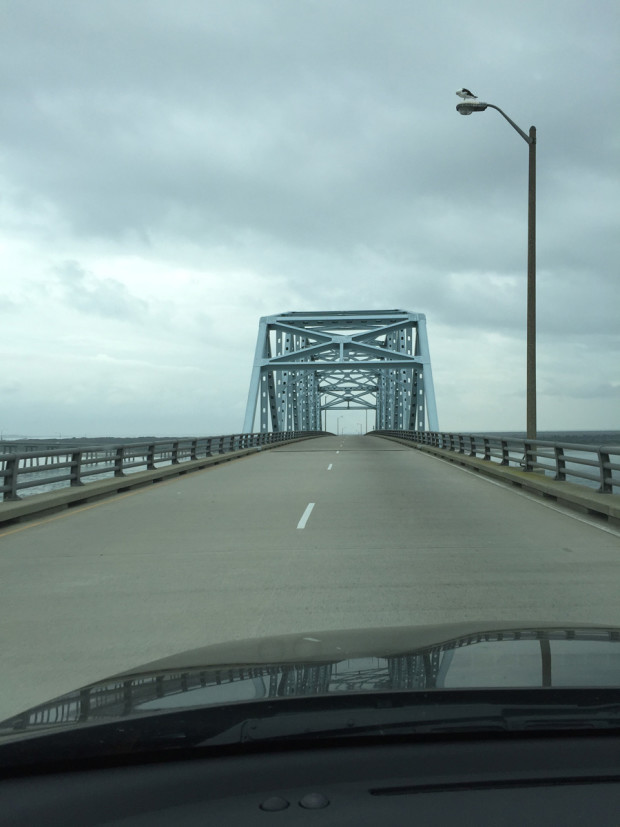
It’s really a shame that it was so foggy and cloudy during my crossing. Imagine how pretty it would be at sunrise and/or sunset.
The Virginian Pilot featured a great multimedia piece in April 2014, When Men Split the Sea, all about the building of the bridge-tunnel.
Here’s a brief video from the History Channel for those of you less-inclined or too pressed for time to read that long article:
It really is a different world on Virginia’s Eastern Shore when compared to areas west of the Chesapeake Bay.
Overview map of Virginia’s Eastern Shore
(note the odd names)

In future posts, I’ll share some images and pics from Cape Charles at the southern end and Chincoteague at the northern end.
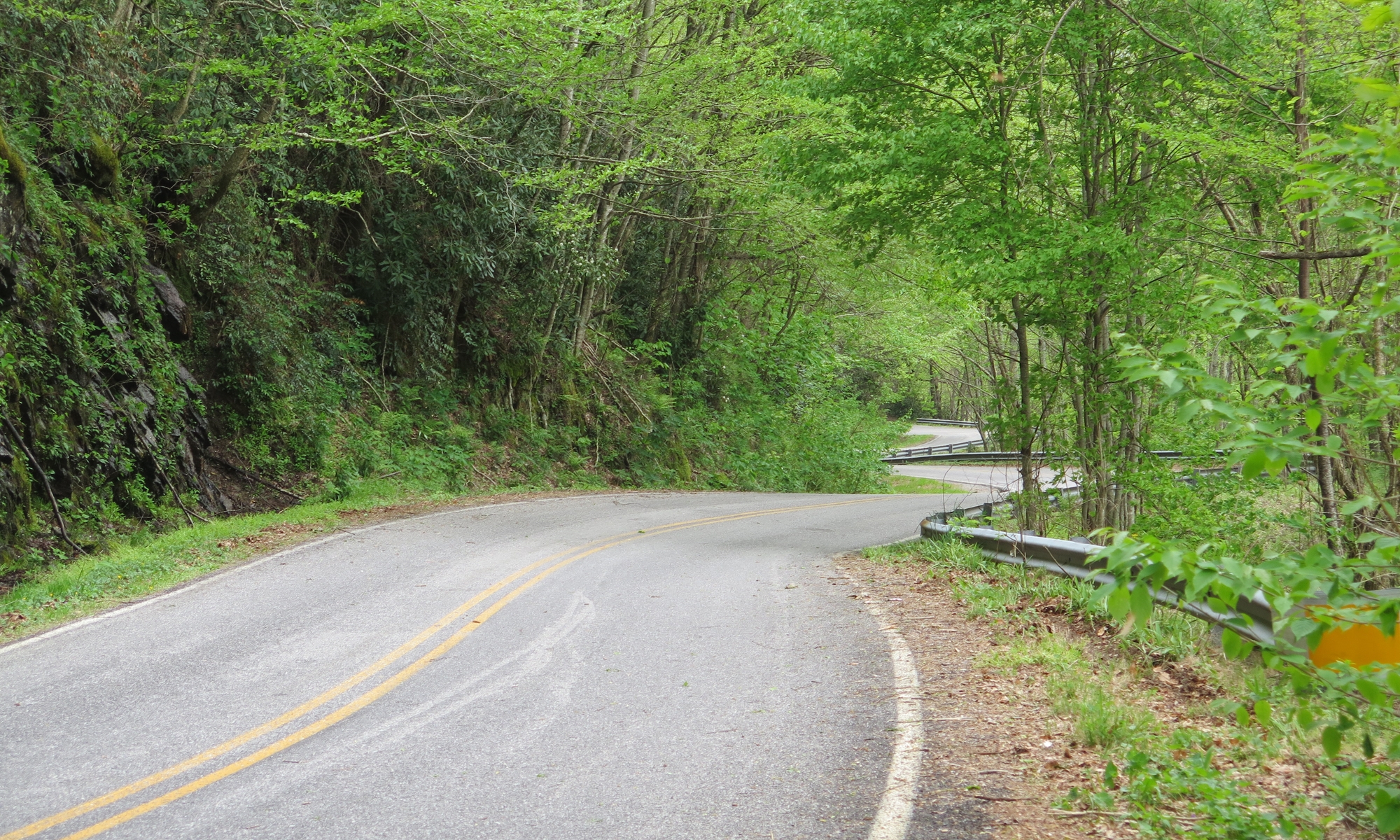
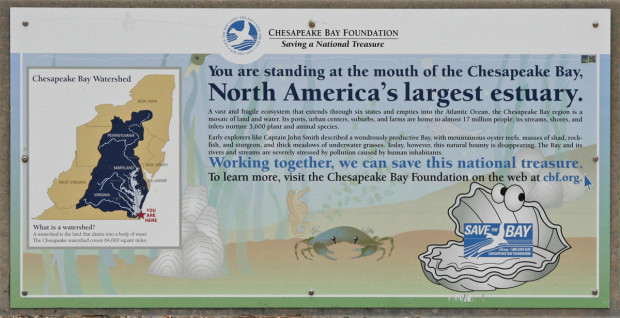
I’ve seen that bridge-tunnel on the map and thought it would be kind of cool. Thank you for the pictures!
You’re welcome. I just wish the sky had been clear and blue. Maybe next time. 🙂
Huh, now that you mention it, ToadMama, I have seen the Chesapeake Bay Bridge-Tunnel on a postcard—and recently! Weird. 🙂
I love learning about engineering marvels—new, old, or ancient. The video was a nice inclusion.
I think it’s strange that the peninsula was divided among three states. It seems like that could be a governmental pain in the ass. If you ask me (says a fella from the west), the whole thing should be Delaware, dammit! Yet I’m sure there was a reason for it—maybe shares of sites, or possible sites, for Atlantic ports.
Ry, I’m glad you enjoyed the video. And that’s really a funny coincidence with the postcard!
I guess I could look into why the boundaries on the peninsula are what they are, but I’m pretty sure you’re right about it having something to do with coastline/port access.
Ry – The History Channel actually has a show called “How the States Got Their Shapes”. My HTML stinks, but now you know it exists. 😉 I’m not sure if there’s an episode that covers Delaware.
Hey, thank you for the link, Shan. How the States Got Their Shapes is certainly worth a closer look.
Though I haven’t found confirmation of my suspicion (it seems that the boundary process was slow and gradual, so the share might be more accidental than intentional), I did read something interesting on Wikipedia: Wiki (if it can be trusted) indicates that Delmarva residents have tried several times already to gain independent statehood for the whole peninsula… As the state of Delmarva, of course!
Having a state of “Delmarva” would be funny. Maryland would never let that happen, though, too much money in taxes coming from Ocean City.
I agree: “Delmarva” just doesn’t sound like the name of a state. When I hear it, I imagine a maiden aunt with wild-ass red hair; reading glasses on a super-long, randomly beaded chain; an arsenal of, um, unique sweaters that Delmarva has, of course, knitted herself; and a laugh that’s more of a cackle…
“Oh, don’t mind my aunt Delmarva—she’s just as animated when she’s sober.”
Aunt Delmarva and her wild, red ass-hair sounds fun! 😆
Somehow, Aunt Delmarva has devolved into a baboon, all wild-haired and red-assed…
“Oh, auntie, how you’ve let yourself go.”
Delmarva is an island?!?!
Shan, crazy, I know, but I read somewhere that since the C&D Canal was dug, the peninsula is technically surrounded by water and only connected to the mainland by bridges. And since I read it on the Internet, it must be true.
Cool post, much i did not know before.
Ok so I have to ask, is Assateague part of MD or VA? I believe I always thought it was VA but it appears to cross the VA/MD border in that greatap pic at the beginning of the post.